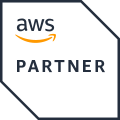Five Keys to successfully implementing a FinOps strategy in your organization
In an increasingly digital and competitive business landscape, efficiently managing cloud costs has become a strategic priority. In 2025, this need has become even more critical with the widespread adoption of AI-based solutions, multi-cloud environments, and hybrid infrastructures.
In response, many organizations are adopting FinOps practices to optimize cloud spending, promote financial transparency, and maximize the value of their technology investments. However, for this transformation to be truly effective and sustainable, it must be approached with method, vision, and collaboration.

In this article, we share and turning cloud financial management into a driver of business value.
1. Establish a strategic foundation for your finOps approach
The starting point is to gain clarity on the mission, objectives, and responsibilities tied to cloud financial management.
To do this, it’s recommended to develop a foundational document that outlines the strategic vision, priorities, and how FinOps aligns with broader business goals.
Having this framework in place helps to:
- Provide focus in complex environments: Especially valuable when managing resources across multi-cloud setups or AI workloads.
- Enable alignment with leadership: Helps clearly and consistently communicate the value and impact of FinOps to executive stakeholders.
- Guide decision-making: Acts as a reference to prioritize initiatives and ensure efforts are concentrated on the most critical areas.
- Boost efficiency: With a clear roadmap, teams can minimize downtime and scattered efforts, enabling faster, more agile execution.
2. Create a Common FinOps Glossary
Cloud-related technical and financial terminology can vary significantly across teams, making collaboration challenging. That’s why, in 2025, many organizations are promoting a FinOps glossary to ensure everyone speaks the same language especially as new concepts like unit economics, AI forecasting, and dynamic reservations are introduced.
This glossary is key to:
- Reducing misunderstandings: Particularly between IT, finance, operations, and AI teams.
- Improving talent onboarding: It helps new profiles integrate more easily into the FinOps ecosystem.
- Enabling effective cross-functional collaboration: Essential when cost-related decisions have a direct impact on business outcomes.
3. Foster a cross-functional and sustainable finOps culture
Culture is the true driving force behind any FinOps team. Tools and policies are not enough it’s essential to build a shared mindset focused on efficiency, transparency, and continuous improvement.
This culture must reflect today’s new realities:
- Expanded collaboration: It’s no longer just IT and finance; AI, data, and sustainability teams must also be part of the conversation.
- Cost democratization: Every cloud user from developers and data scientists to business teams should understand the financial impact of their actions.
- Visibility into AI/ML costs: As generative models grow in use, accurately tracking and managing costs related to training, inference, and data storage is critical.
- Gamification and recognition: Initiatives like quarterly “Cost Champion” awards are gaining traction as a positive way to encourage engagement.
4. Define relevant KPIs and metrics
With a more distributed and expensive cloud environment (especially due to AI workloads), measuring the impact of FinOps has never been more important. In 2025, the metrics focus on:
- Cloud Enablement: The level of FinOps training and maturity among business leaders.
- Cost Allocation: Percentage of spending correctly tagged and attributed to responsible parties.
- Optimization Savings: Ratio between optimized resources and optimizable resources.
- Forecast Accuracy: Especially useful to prevent mismatches in AI models with high GPU consumption.
- FinOps Automation: Number of automated recommendations implemented compared to the total generated.
Additionally, many organizations have started to include metrics related to the environmental impact of cloud usage, integrating FinOps with sustainable practices (GreenOps).
5. Select and regularly review your tool strategy
FinOps tools have significantly advanced. It’s no longer just about visualizing costs but predicting, automating, and optimizing proactively. The tool strategy should be reviewed periodically, considering the following:
- Scalability and Flexibility: The tools should adapt to multi-cloud environments and variable workloads (such as AI models).
- Integration with AI/ML tools: To monitor and control spending on complex projects.
- Return on Investment (ROI): Evaluate whether the tools truly help save more than they cost.
- Advanced Features: Such as AI-driven recommendations, anomaly detection, or smart forecasting.
- Usability and Customization: Provide clear insights tailored to each business area.
The right tool selection not only facilitates cost control but also enhances proactive, data-driven decision-making.
Transforming cost control into a high-impact cloud strategy
Applying an effective FinOps approach requires much more than adopting good practices on an ad hoc basis: it requires vision, methodology, collaboration between areas and appropriate tools. Throughout this article we have seen five key pillars to achieve it, but its implementation can be a challenge if you do not have the right knowledge and support.

At Altostratus we help organizations to activate their FinOps strategy from a comprehensive approach that combines analysis, technology and consulting. We work together with business, technology and finance teams to:
- Obtain clear, real-time financial visibility.
- Optimize resources and automate processes to maximize operational efficiency.
- Design a sustainable and scalable cloud governance strategy.
- Drive collaboration between technical, financial and product teams.
Want to maximize the value of your cloud investment?
Contact us and find out how we can help you implement a FinOps strategy adapted to your business.



